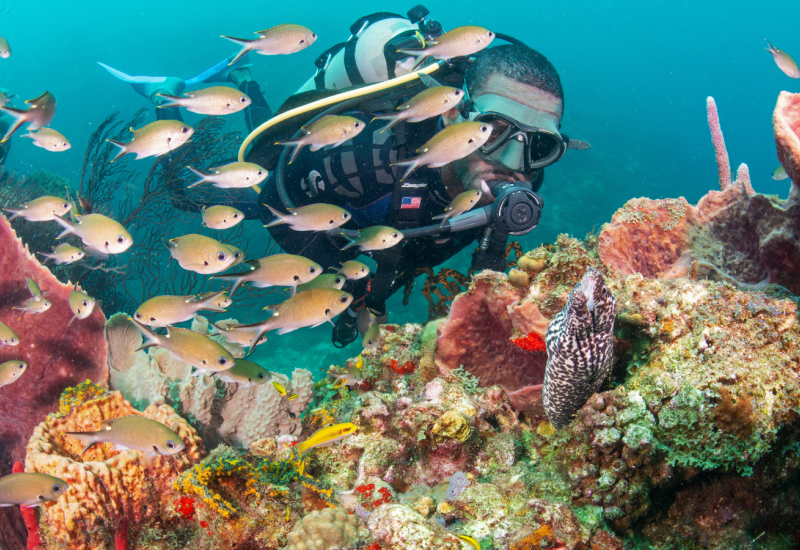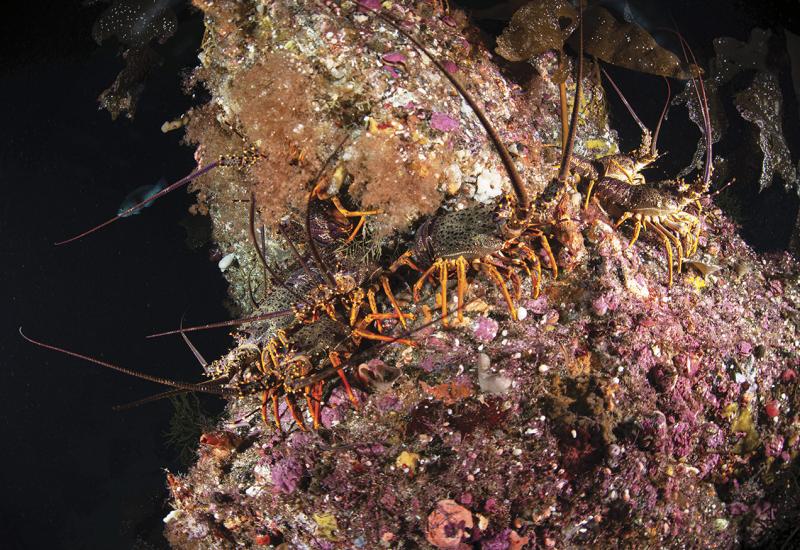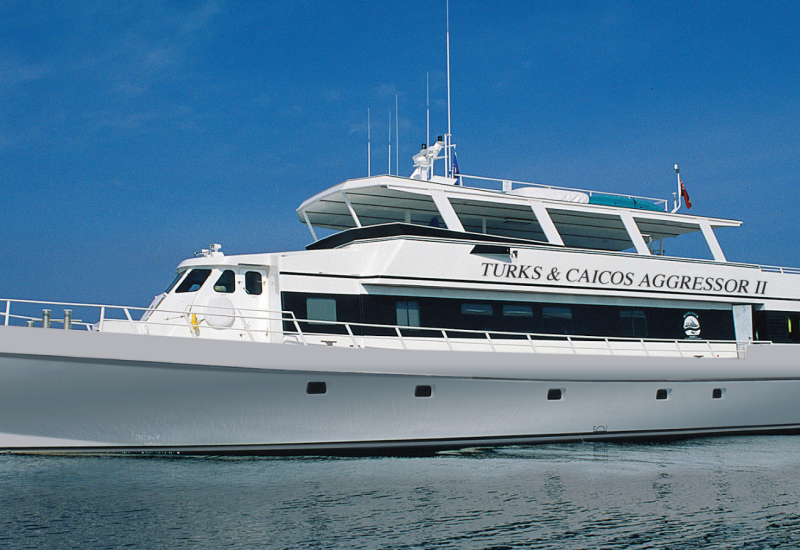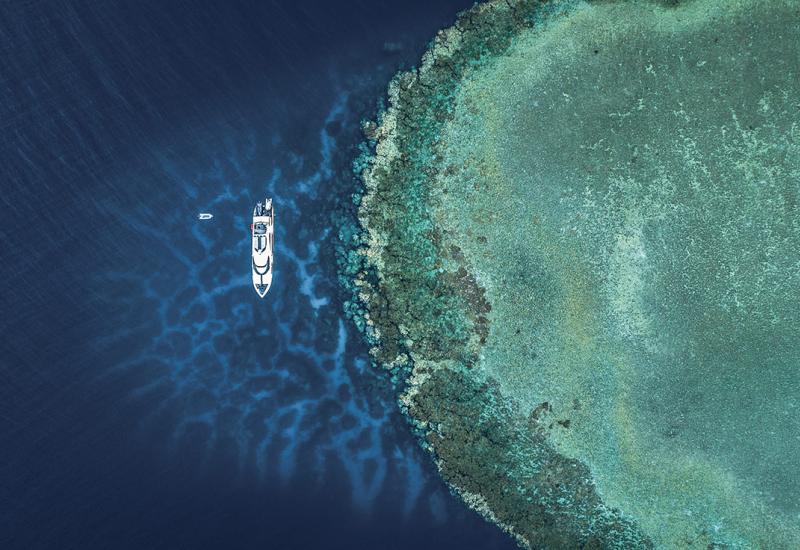Where to Go Scuba Diving in Croatia

Rainer LesniewskiEnticing wrecks litter Croatia's sprawling coast.
With over 1,100 islands dotting Croatia’s more-than 1,000 mile coastline, the Adriatic Sea is practically begging divers to explore it. These waters, best known for their dazzling blue hue and spectacular visibility all year, are filled with historic artifacts, gargantuan limestone caverns and well-preserved wrecks dating back to the 2nd century B.C.
The northern Istrian coast offers plenty of shallow-diving spots worth the dip, but Croatia is best known for its deep dives further south. Sites like the Vis Island wrecks attract technical divers from around the globe for good reason.
The water temperature ranges between 75ºF in the summer and 50ºF in the winter. It is important to note that, despite the great visibility year-round, the many Croatian dive shops operate only from June to September. Plan your trip accordingly.
Where to Dive in Northern Croatia
Croatia’s Istrian coastline and islands within the Kvarner gulf are full of easy-to-dive sites rich in marine life that are great for beginners. This area also boasts some of the country’s most famous northern wrecks: HMS Coriolanus, S/S Hans Schmidt (also called Istria), S/S Baron Gautsch and Giuseppe Dezza.
1. Cres Island
This major island southeast of the Istrian peninsula is home to the Losinj Historical Underwater Park (Forest Park Čikat). The manmade park has several sunken statues and historic replicas, and a max depth of 45 feet. Other sites around the area include Srakane Cave on nearby Male Srakane, and the S/S Lina and M/S Tihany wrecks. The closest airport is Pula, and local dive centers include the Vrsar-based Starfish Diving Center and Adriatic Diving Center.
2. Krk
Tucked into the northwestern curvature of the mainland coastline, this island’s exceptional diving includes several caverns, caves and tunnels, as well as house reefs and a handful of worthwhile wrecks. Sunk close to shore in 1968, the Greek ore freighter Peltastis rests a little over 60 feet deep on a sandy bottom. Divers can also explore the 114-foot-long Vrbnik Cave, where filtered light makes for some incredible visuals.
Where to Dive in Central Croatia
1. Kornati
The sprawling Kornati archipelago is a diveable national park with dozens of spectacular sites, ranging from steep walls to cavernous formations and drop-off reefs. Local diving centers include Najada, Venus and Dive Center Bozava; the dive shop will use your passport to acquire the mandatory national park diving permit, which costs 100 Kuna.
2. Pag
A large island not far from the city of Zadar, Pag offers bays aplenty for diving adventures. The craggy coastline creates plentiful coves with reefs suitable for all experience levels—as well as many wrecks. Some of the most-visited undersea treasures include the 196-foot Golija cargo ship, the Rose wreck and Tabinj, the wreck of a wooden trawler. Vlaška mala cove is another excellent attraction, where a recently-discovered shipwreck dating back 2,000 years is an archeological site containing Roman-era pottery and tons of life.
3. Premuda Island
This tiny strip of land in the Zadar archipelago is home to the dive site Cathedral Cave, also called Katedrala. The system of connected caves located in the area is a favorite among divers who love to feel dwarfed by the enormity of underwater geologic features. Several holes in the ceiling of Cathedral Cave allow rays of light to filter through into the submerged cavity, illuminating the sandy bottom—truly a spectacular sight for divers of all experience levels.
Where to Dive in Southern Croatia

Gerald Robert FischerDivers gather around a Vis shipwreck.
1. Susac
This rocky isle surrounded by blue water and stunning dive sites is off the beaten path. Best reached via dive center charters from Vela Luka on Korcula Island, it is a stretch for a short trip but rewards ambitious divers with Te Vega, a saltwater lake that can be reached via a tunnel at a depth of 15 feet. A lone 19th-century lighthouse perches atop its highest point and serves as the island’s only accommodations.
2. Vis
A remote island off the Dalmatian coast, Vis Island is known for its impressive selection of wrecks. Recreational divers can enjoy the shallow wrecks—such as the Fortunal and the 236-foot-long steamship Teti—in addition to shallow caverns and archeological sites with artifacts like clay amphorae. Technical divers can explore WWI and WWII shipwrecks, as well as two sunken planes: B-24 bomber rests at 170 feet at its deepest point, and the “Flying Fortress,” a Boeing B-17, hits about 230 feet. Vis can be reached via ferry from Split or Hvar at either the Komiza or Vis ports.
3. Dubrovnik
One of the most popular cities to visit in Croatia, Dubrovnik offers exciting diving opportunities from shore or boat. Diving Center Blue Planet, located inside the Hotel Dubrovnik Palace, can get you geared up to explore the reefs, caverns, walls and even wrecks a very short distance from shore. Diving the Taranto wreck is a real treat: The ship was carrying flour and food items from Italy when it hit an underwater mine and sank right off the Dubrovnik coast. It is now accessible to divers willing to make the arduous one-minute boat ride to the site. The bow of the well-preserved ship sits at a depth of 65 feet, and it stretches down to about 150 feet. The scattered remains of another shipwreck, the Aurora, is less than a 30-minute boat ride from shore. This dive also offers the opportunity to descend into a stunning shallow blue cave.











